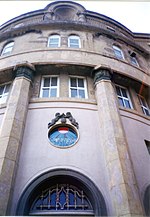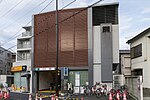Japan Women's University
1948 establishments in JapanEducational institutions established in 1948Japan Women's UniversityKantō university stubsPrivate universities and colleges in Japan ... and 3 more
Tokyo university stubsUniversities and colleges in Kanagawa PrefectureWomen's universities and colleges in Japan

Japan Women's University (日本女子大学, Nihon joshi daigaku) is the oldest and largest of private Japanese women's universities. The university was established on 20 April 1901 by education reformist Jinzo Naruse.The university has around 6000 students and 200 faculty. It has two campuses, named after the neighborhoods in which they are located: Mejirodai (目白台) in Bunkyō, Tokyo, and Nishi-Ikuta (西生田) in Tama, Kawasaki, Kanagawa Prefecture. There are associated schools from kindergarten through senior high school.
Excerpt from the Wikipedia article Japan Women's University (License: CC BY-SA 3.0, Authors, Images).Japan Women's University
Shinobazu-dori Avenue, Bunkyo
Geographical coordinates (GPS) Address External links Nearby Places Show on map
Geographical coordinates (GPS)
| Latitude | Longitude |
|---|---|
| N 35.716944444444 ° | E 139.72055555556 ° |
Address
日本女子大学
Shinobazu-dori Avenue
112-8001 Bunkyo
Japan
Open on Google Maps









